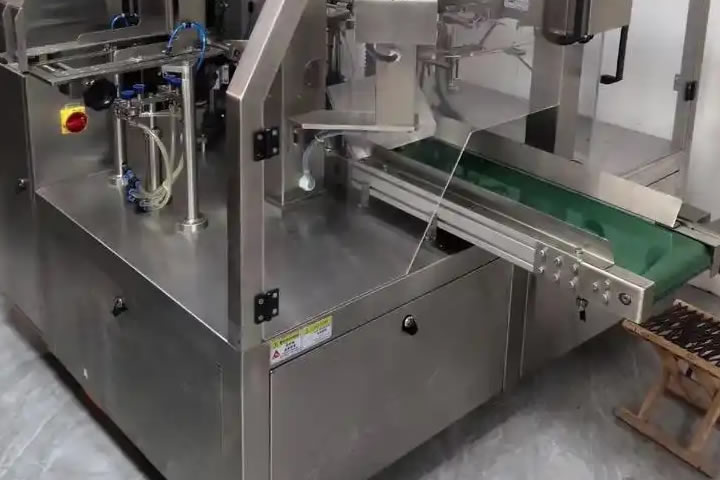In the filling workshop of a palm oil processing plant in Southeast Asia, dark brown grease is flowing slowly along the pipe. When the viscous liquid is injected into the glass bottle, a set of improved alloy nozzles are vibrating at a specific frequency to evenly disperse the suspended plant fiber debris - this is the key scene for local companies to overcome the industry pain points after introducing a new filling and packaging production line.

Due to the processing characteristics of palm oil in the region, the finished product often contains 0.3%-0.8% fiber residue. When the straight-cylinder nozzle of the traditional filling and packaging production line is in operation, the debris will gradually accumulate on the inside of the pipe wall. The operator recalled: "In the past, every 200 liters of filling had to be stopped for cleaning, and sometimes it took 40 minutes to disassemble the nozzle, and the production line efficiency loss exceeded 25%."
The technical team redesigned the nozzle structure into a three-layer sleeve type and added a circular flushing groove on the outside of the filling port. Every time the filling and packaging production line completes 100 operation cycles, the system automatically triggers a 0.5-second high-pressure pulse water flow. Through the transparent observation window, it can be seen that the light blue cleaning liquid flushes the pipe in a spiral shape, instantly flushing the residue attached to the dead corner into the waste recovery bin.
"This self-cleaning mode is like installing a 'smart toothbrush' on the production line." The on-site engineer demonstrated the data on the control panel, "After the transformation, the effective operation time per day increased from 14 hours to 21.5 hours, and the filling accuracy remained stable at more than 99.2%."
This innovation not only solved the blockage problem, but also promoted the green transformation of the production process. The flushing waste liquid is re-injected into the cleaning system after sedimentation and filtration, which reduces the discharge of industrial wastewater by 15 tons per month for each filling and packaging production line. The local environmental protection department specifically pointed out in the research report: "This technology organically combines equipment maintenance with resource recycling, providing a replicable environmental protection sample for the palm oil processing industry."
The setting sun shines through the skylight on the ceiling of the workshop, reflecting fine light spots on the shiny alloy pipelines. As the last batch of labeled palm oil bottles entered the palletizing area, the filling and packaging production line, once criticized as "delicate", is now writing a new chapter in how smart manufacturing can solve the dilemma of traditional industries with its continuous roar.


